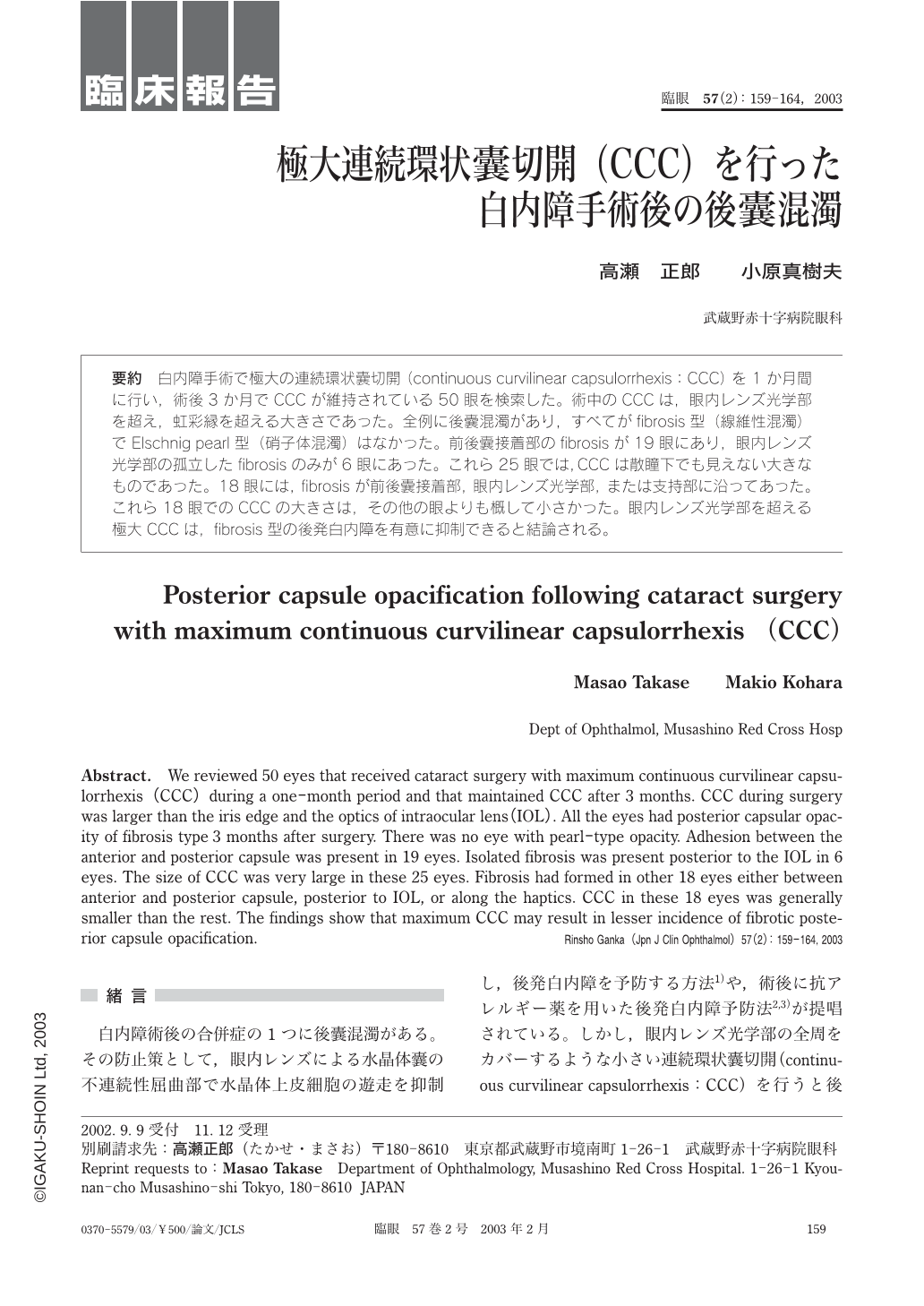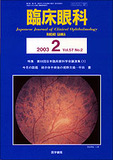Japanese
English
- 有料閲覧
- Abstract 文献概要
- 1ページ目 Look Inside
要約 白内障手術で極大の連続環状囊切開(continuous curvilinear capsulorrhexis:CCC)を1か月間に行い,術後3か月でCCCが維持されている50眼を検索した。術中のCCCは,眼内レンズ光学部を超え,虹彩縁を超える大きさであった。全例に後囊混濁があり,すべてがfibrosis型(線維性混濁)でElschnig pearl型(硝子体混濁)はなかった。前後囊接着部のfibrosisが19眼にあり,眼内レンズ光学部の孤立したfibrosisのみが6眼にあった。これら25眼では,CCCは散瞳下でも見えない大きなものであった。18眼には,fibrosisが前後囊接着部,眼内レンズ光学部,または支持部に沿ってあった。これら18眼でのCCCの大きさは,その他の眼よりも概して小さかった。眼内レンズ光学部を超える極大CCCは,fibrosis型の後発白内障を有意に抑制できると結論される。
Abstract. We reviewed 50 eyes that received cataract surgery with maximum continuous curvilinear capsulorrhexis(CCC)during a one-month period and that maintained CCC after 3 months. CCC during surgery was larger than the iris edge and the optics of intraocular lens(IOL). All the eyes had posterior capsular opacity of fibrosis type 3 months after surgery. There was no eye with pearl-type opacity. Adhesion between the anterior and posterior capsule was present in 19 eyes.Isolated fibrosis was present posterior to the IOL in 6 eyes. The size of CCC was very large in these 25 eyes. Fibrosis had formed in other 18 eyes either between anterior and posterior capsule,posterior to IOL,or along the haptics. CCC in these 18 eyes was generally smaller than the rest. The findings show that maximum CCC may result in lesser incidence of fibrotic posterior capsule opacification.

Copyright © 2003, Igaku-Shoin Ltd. All rights reserved.


